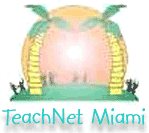

|
How It Works: Deserts: Not Just For Lizards is a unit that explores the mysteries of some of the most unfriendly but stunning places on earth. Students will learn the definition of desert and how and why deserts have developed in certain areas. Students will also learn about location, landforms and special features of the world’s greatest deserts. This unit integrates many disciplines including: technology, geography, reading, research, writing, science and art. The activities and lessons have been designed to accommodate all learning styles. So what are you waiting for? Crawl, slither and hop into the Deserts: Not Just For Lizards Unit. You won’t leave a grain of sand unturned if you follow these marvelous lessons. Standards:
Estimated Class Periods To Complete: 10 or more Software Materials Used: Software need to complete projects are multimedia presentation software such as HyperStudio, PowerPoint, Kid Pix, Word Processor, and Microsoft Publisher. Keywords: Arroyo, burrow, butte, cactus, canyon, desert, desertification, drought, dunes, erosion, mesa, mesquite, oasis, amphibian, arthropod, arid, diurnal, evaporation, nocturnal, slat flat, sand, weathering Students: This project is suitable for a range of grade levels within the elementary school. The teacher may need to modify some of the lessons in order to meet the needs of the students being taught. The lessons incorporate activities suitable for different learning styles. The lessons can be adapted to work with small groups or large groups of students. The only prerequisite are basic skills in reading, writing and computer skills. Overall: The intent of this project is to develop students’ skills in geography and to develop awareness of the desert environment. The project integrates multimedia and high interest software to captivate its audience. The lessons integrate many subject disciplines, which helps in the students’ retention and understanding of the concepts. This unit’s goal is to captivate the students’ curiosity with the fascinating world of deserts. Tips: Students should be trained on Internet Navigational Skills. Teacher should check the URLs provided to make sure they are still active. Research the provided links for more information. |
About the Teacher: Rosa M. Sampedro has been teaching in the Miami Dade Public School System for 15 years. She received her Bachelor’s Degree and Master’s Degree from Florida International University. She is currently the Technology Specialist at Lorah Park Elementary School. She provides computer training to teachers, parents and students. She is currently the Parent Trainer for the Citibank FamilyTech Program and the Site Coordinator for the AT&T TeachNet Grant. Subjects: Science, Social Studies Grade Levels: 3 through 6
|
What do you think of my
project? I'd really like to hear your opinion -
Click here for a very brief survey.